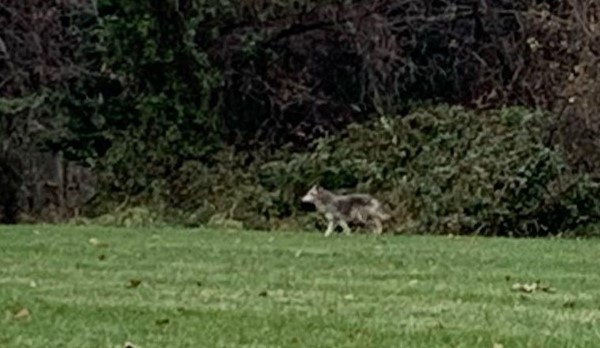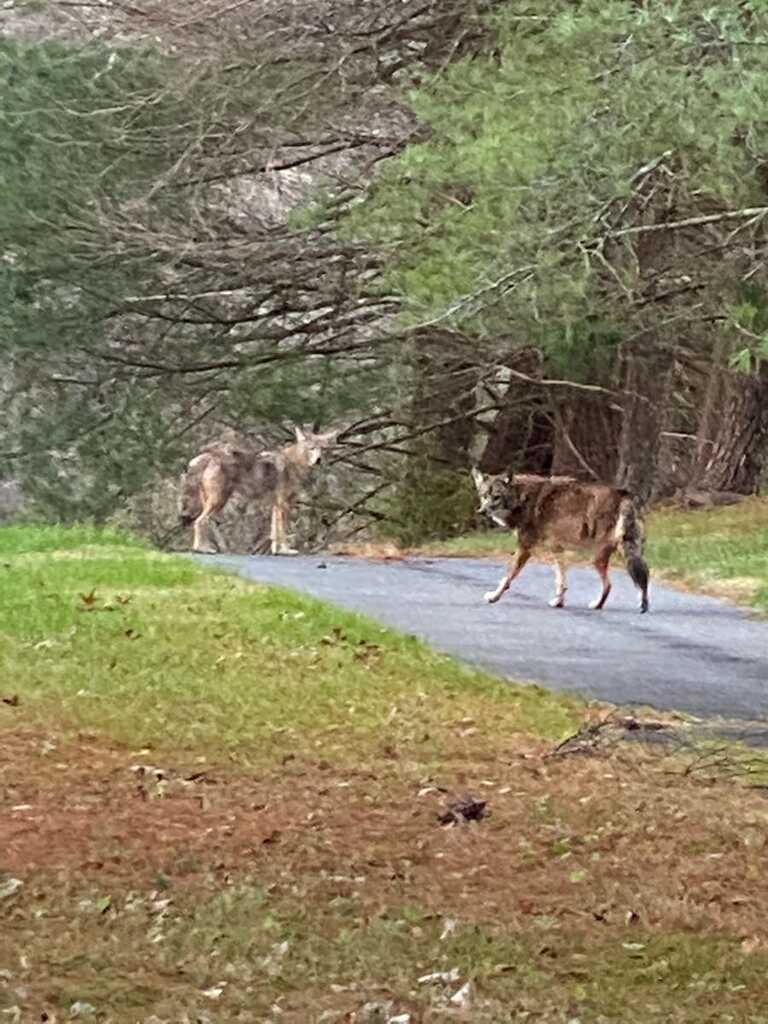Thursday, February 3, 2022
“Coyotes differ from most other wildlife species in urban areas in that they are often perceived to be a danger or a nuisance simply by being seen,” says Fairfax County information on the website. “Most complaints regarding coyotes are that they occur near people, even when no incidents or damages have occurred. Simply seeing a coyote should not be cause for alarm.”
A picture of the animal at Lee District Park was posted on the Nextdoor social media site, and there were several responses.
Renee Grebe, of Loft Ridge Small Side, praised the presence of coyotes. “We've got them all over here - what a joy to have! Thank you, coyotes, for helping keep our rodent population in check," she said.
In nearby Huntley Meadows Park, coyotes have been heard after dark, said one of the Friends of Huntley Meadows Park.
Marlene Koenig of Manchester Lakes said on social media, "I have seen [coyotes] in the Kingstowne area since the late 1990s. There is a pack of perhaps six that live in Huntley Meadows. You can hear the howling at times."
According to the county, coyotes are opportunistic foragers with diverse diets that commonly prey on small animals such as mice, rats, voles and rabbits but will also readily eat fruits, plants and carrion.
But coyotes may “mistake” small, unattended pets including cats and small dogs as prey.
“They will however see any small pets as food, particularly outdoor cats, when they find them wandering off in the woods,” according to Alonso Abugattas in the Capital Naturalist blog. “This is just one more good reason among so many to not let cats out.”
“Coyotes are remarkably shy and avoid people any way they can,” Abugattas said. “Most are rarely seen, and certainly are no danger to people.”
Coyotes are territorial and may view larger dogs as potential competitors, particularly from January to June while mating and birthing pups, although actual confrontations are rare.
In May 2018 Animal Protection Police Officers and the Fairfax County Wildlife Management Specialist reported that a small dog was attacked and killed in the forested area of the Parklawn community of Alexandria.
“The best way to safeguard pets in areas where coyotes are active is to keep them indoors and do not leave them outside without supervision,” said Dr. Katherine Edwards, Fairfax County Wildlife Management Specialist.
According to the Capital Naturalist blog by Abugattas, https://capitalnaturalist.blogspot.com/ or on Facebook:
“Our Eastern Coyote (Canis latrans) … was first noticed around 1930 or so spreading East near the Great Lakes, as Western Coyotes wandered over and took over the areas vacated by most gray wolves. They mixed with Algonquian Wolves and continued to travel, mixing along the way with dogs as well. What resulted was a mix of about 60% Western Coyote, 30% Algonquian Wolf, and the remainder dog, though these averages can vary. They are now found in every county in the mid-Atlantic.
“The Eastern Coyote is bigger than those in the West, about the size of a border collie or even German Shepherd, often between 45 to 55lbs, though occasionally bigger. The males are usually larger than the females. They are not only larger, but often tend to be more quiet than their western cousins, not howling as much, and often in much smaller groups. Their color can be variable as well, though they're often some shade of tan, with erect ears, bushy downward-pointing tail with a dark tip. Most have white chins as well.”
Fairfax County lists a series of tips for coexisting with coyotes:
* Never feed or attempt to “tame” a coyote.
* Place garbage and compost in an animal-proof container, such as a metal trash can with latches on the lid or secure with bungee cords.
* Do not feed pets outside or store pet food outside.
* Keep small pets inside and do not leave unattended when outside.
* Provide secure shelters for poultry, rabbits, and other vulnerable animals.
* Coyotes are most active at night and early morning hours; however, they may be active during the day in search of food or denning sites.
* If you see a coyote crossing your property, and you don’t want it there, let use hazing techniques to frighten coyotes from the property or exclusion measures to restrict their access. Yell and wave your arms at the coyote. Use noisemakers such as whistles, air horns, bells, “shaker” cans full of marbles or pennies, or pots and pans banged together.